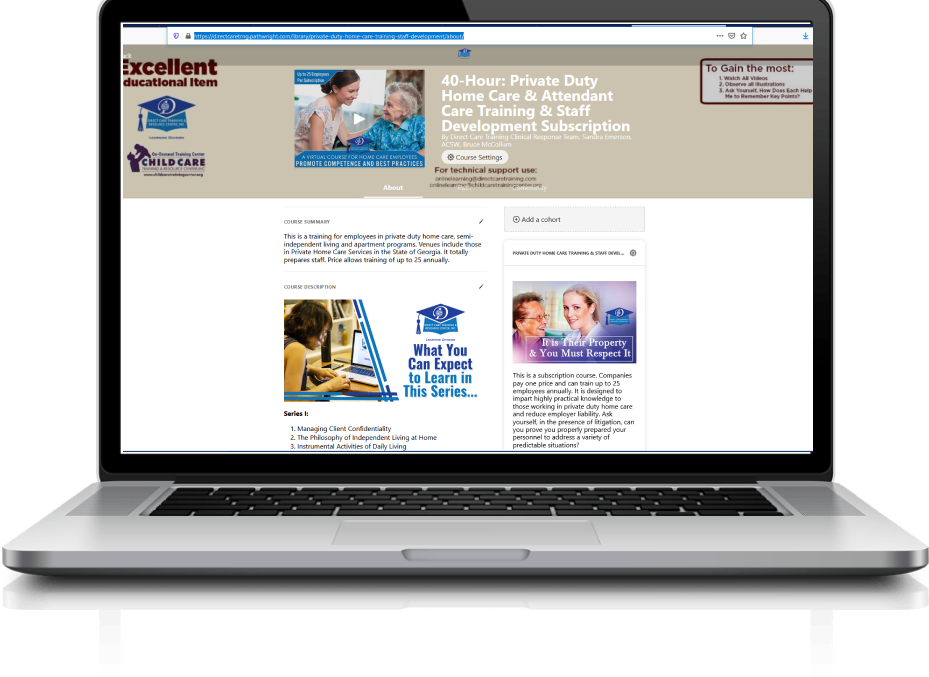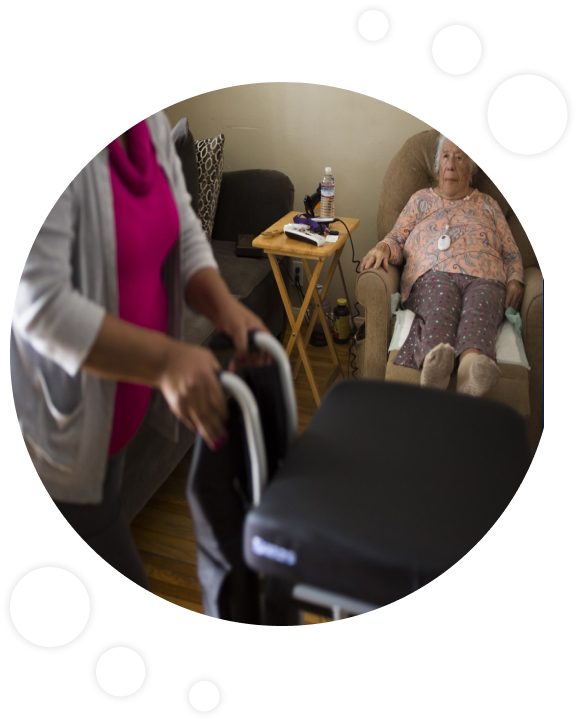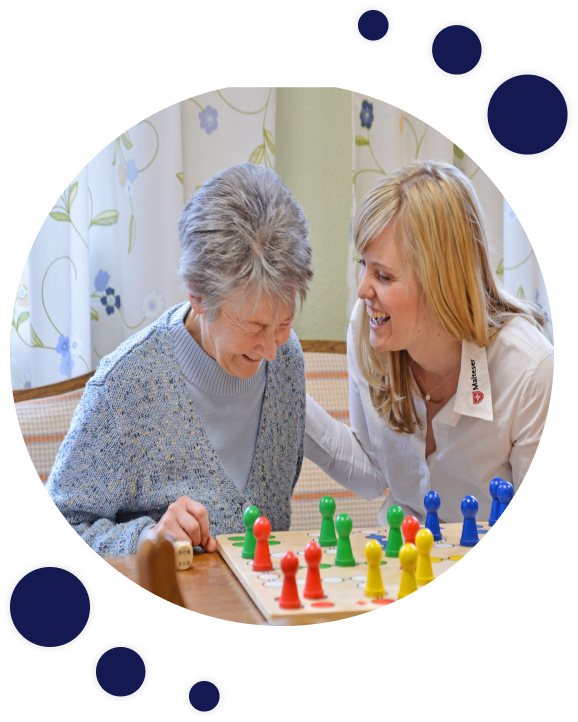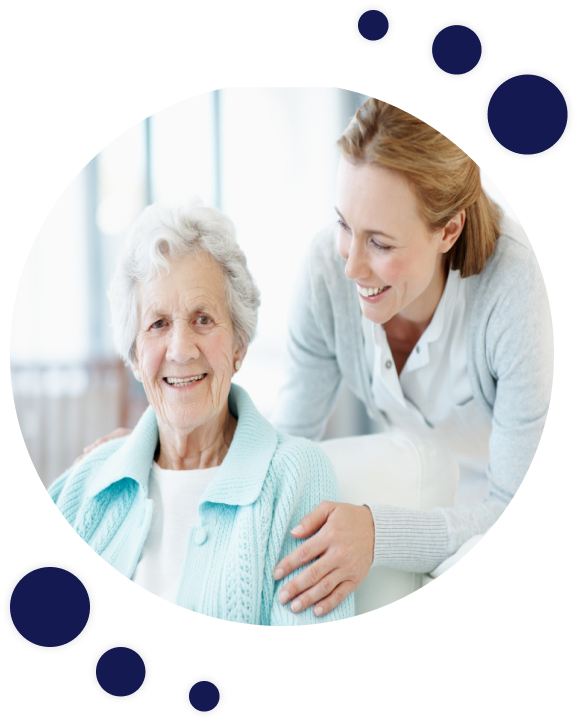Welcome to the Best On-Line Hub that Leads You to a World of Preparedness in private home care services.
While this training has special elements for those in the Michigan Personal Injury Protection arena, its advice has applicability across jurisdictions. As an example, it includes all the 40-Hour curriculum requirements for Personal Home Care Services in the U.S. State of Georgia.
Attendants need to be focused on the specific needs of everyone served. This makes knowledge of your clients an essential part of being successful.
The training subscription series available to employers from our company allows for one annual payment and usage of the training by as many as 25 persons.
Content includes:
Section I: Special Info for Home Care Managers and Managing Client Confidentiality
An Introduction to the Issue of Managing Confidential Information and Important Managerial Critiques
- Section I-A: What is Confidential?
- Section I-B: Your Important Responsibility
- Section 1-C: For the Manager: Important Items for Conducting Assessments
- Section 1-D: The Periodic Service Inspection: How Best to Conduct
- Section 1-E: Personnel Management - Managing Challenging Personnel Situations
- Section 1-F: Value of Documentation Critiques: Personnel and Service Inspections


Section 2: Safety and Related Protocol in a Private Home
Assistance with Bathing, Grooming, Shaving, Dental Care, Dressing and Eating Tips for Respecting the Property of Others, Protocol for Nurses and Plans of Care -
- Section 2-A: Respect Others Property. How?
- Section 2-B: Rendering Personal Care Safely and With Dignity-Part 1
- Section 2-B: Rendering Personal Care Safely and With Dignity-Part 2
- Section 2-C: Examining How Sexual Impropriety in Home Care is Defined
- Section 2-C-1: Infection Control in the Home
- Section 2-D: Managing Changes in the Client's Condition
- Section 2-E: Special Protocol for Nurses
- Section 2-F: The Plan of Services and Daily Routine
- Section 2-G: Protecting Your Back During Transfers
- Section 2-H: Managing Aggressive Behaviors - Course Content Overview
- Section 2-H-1: Types of Aggression and Why it Generally Occurs
- Section 2-H-2: Aggression Among Alzheimer's Patients
- Section 2-H-3: Managing Aggression in Care - Our Response to Aggression
- Section 2-I: Serving the Mentally Ill and DD Populations in SIL Programs
- Section 2-J: Special Considerations for Quadriplegics
- Section 2-K - A Review of What we Have Discussed
Section 3: The Promotion of Safety & Special Needs
Giving Attention to Safety in a Client's Private Home
- Section 3-A: Knowing and Understanding the Client's Needs
- Section 3-B: Your Contribution to Safety
- Section 3-C: Transportation Safety and Van Driving Protocol
- Section 3-D: The Behavioral Contract in Semi-Independent Living
- Section 3-E: Safe Transfer and Ambulation


Section 4: High-Tech & Medical Items Requiring Competence
A Look at Your Role in Complementing Important Care Items
- Section 4-A: Special Section on Guarding Client Privacy
- Section 4-B: Managing Medications
- Section 4-C: Documenting Your Activity
- Section 4-D: Using TeleHealth to Manage Supervisory Visits
- Section 4-E: Nutritional Protocol in Group Living
- Section 4-F: Taking Vital Signs and Blood Pressure with Glucose Levels
Section 5: Manifesting Responsible Attendance
Your Contribution to Teamwork
- Section 5-A: Strategies for Life Management that Promote Reliable Attendance

